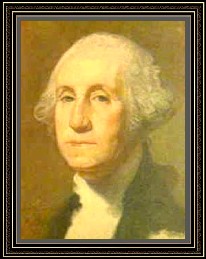Where Do People Really Stand?
by Dean Stephens - October 22nd, 2010
I have been intrigued for some time with the confusion that permeates any discussion of politics. It started for me when Karl Rove and George Bush touted their 'compassionate conservative' ideology and so many social conservatives jumped on the bandwagon without any real understanding of the true meaning. There is little that is 'conservative' about the ideology so why were these people who believed they were conservative so willing to adopt it? In foreign relations the 'compassionate conservative' ideology is mostly neo-conservative, a broad spectrum belief that is left of center in practice under an argument that this best serves a right of center goal. In domestic relations the 'compassionate conservative' ideology is essentially left of center progressive, or at least sufficiently left of center to be called neo-progressive.
The 'compassionate conservative' ideology (used as an example) helps to explain the complexity of all political terms. The terms we use to describe the various political identities are not single dimension. In truth every ideology has two components that are associated with it. 1. Domestic issues and the relationship of the ideology to those issues. 2. Foreign issues and the relationship of the ideology to those issues.
There is a secondary component to the description which is determined by how broadly an ideology stretches along the dimension. Some are narrowly focused. Some are not.
'Compassionate conservative' also provides another insight. No matter how close two ideologies are on one of the dimensions, being incompatible on the other causes outrage by those who share beliefs on the compatible dimension. That is why progressives absolutely hated 'compassionate conservative' George Bush even though he was proposing domestic programs that they were in favor of. They felt he was stealing from them. That created more anger than if he had been less in agreement on domestic issues. They totally rejected his neo-conservative agenda on foreign relations and that rejection was amplified on domestic relations. He was thus given nothing but contempt for his efforts even where they were in agreement. They doubted his sincerity and considered his efforts intolerable as a result.
The most important aspect of the DOMESTIC RELATIONS dimension is its relationship between government power - statism, and individual liberty - freedom. This is a grid that shows the major political philosophies along that dimension, with statism on the left and freedom on the right.

The most important aspect of the FOREIGN RELATIONS dimension is its relationship between international power - globalism, and national power - patriotism. This is a grid that shows the major political philosophies along that dimension, with globalism on the left and patriotism on the right. There is one major anomaly on this dimension called anarchist. Anarchists could be placed at either end of the spectrum, or even left off. Anarchists reject both globalism and patriotism.

At the bottom of both charts I have indicated the generally accepted ideologies within the two major parties in America, Democrats and Republicans. In the middle there is a gap, indicating where unidentified voters tend to be centered. However there are a number of people who identify generally with one or more ideologies further removed from the center who reject either party label. Unidentified voters stretch from generally progressive to generally conservative, though a small percentage of libertarians and socialists avoid both parties too. The extremes of communism and anarchism also tend not to identify with either party. As a result - these scattered independents from so many different ideologies - the unidentified (or independents as they are sometimes called) are the most diverse group in politics.
It is my belief that this failure of 'unidentified voters' to accept the party they are closest to is based on problems with self identification which we all have a problem with. Most people don't really know what ideology they identify with - or what the ideologies mean either. I discovered this enlightenment a few years back when a republican leader brought a test to a meeting I was speaking at. The test involved each person answering a serious of questions and the results would tell where each fell on the generally accepted grid of political ideologies. Motivated by a desire to tailor my message, I went around and talked with a number of people about where they fell and where they had thought they fell before they took the test.
The results were astonishing. People who thought they were hard core conservatives rated as progressives. A couple even rated as socialists (truly surprising in a Republican group). A number of self identified moderates rated as libertarians and conservatives. A number of conservatives rated as libertarians and moderates. One libertarian rated as a moderate. Only about a third of the audience had come close to predicting how they rated on the test.
Since that night I have been reading a number of books on this subject and it has become more and more obvious that the theme of the test is right. Most people have political beliefs that are far more diverse than any single ideology. Their self identification is usually based on a single issue associated with a single ideology, and thus serves little purpose in classifying them. It rarely is an accurate identification overall.
However the two charts provide a lot of guidance if you understand the ideologies and can rate someone fairly close along the grid. Being exact is not necessary to learn a lot about them. What they say about themselves is not important either unless they are more knowledgeable than most about this entire topic.
Here are some examples of politicians who most people know pretty well and where I would place them on the grids above.
Ronald Reagan
Domestic Relations - Conservative - Foreign Relations - Libertarian
Bill Clinton
Domestic Relations - Populist - Foreign Relations - Progressive
George W. Bush
Domestic Relations - Progressive - Foreign Relations - Libertarian
Barack Obama
Domestic Relations - Progressive - Foreign Relations - Socialist
John McCain
Domestic Relations - Populist - Foreign Relations - Libertarian
Olympia Snowe
Domestic Relations - Populist - Foreign Relations - Conservative
Sarah Palin
Domestic Relations - Libertarian - Foreign Relations - Libertarian
Bill O'Reilly
Domestic Relations - Populist - Foreign Relations - Populist
For perspective on my choices, here is where I rate myself:
Domestic Relations - Libertarian - Foreign Relations - Conservative
It is a useful exercise to think about where you belong on each grid. What I think you will find is that all of us tend to move about from year to year and where you rate next year will be different than today. That is another enlightenment I have gotten out of this ongoing exercise. No one's beliefs are stable unless they have stopped growing and learning.


3 Comments:
Thank you for your post I found it via a google image search for a diagram of "political party left centre or right diagram" or something similar. I did not dream I would stumble upon such a thought through article. :)
This is a fantastic post. Thanks for making it.
The diagrams are particularly helpful to explain to people that the statement "Fascism is a Right Wing ideology" is a lie made by the political Left (who seek to distance themselves from the crimes of National Socialism - but strangely not from Soviet Communism).
I link to this post very frequently - so thanks once again for taking the time to make it.
Thanks for making this post. I think it is superb.
I find it very useful for explaining to people the Big Lie that "National Socialism is a Right Wing ideology", when clearly it is Big State and hence a leftist ideology (although the Leftists promulgate the lie in order to distance themselves from the crimes of the Fascists, but strangely have no problem with the similar crimes of the Soviet Socialists).
I often post links to this page and the excellent diagrams - so thanks once again for taking the time to make this post.
Warmest wishes from New Zealand :)
Post a Comment
Subscribe to Post Comments [Atom]
<< Home